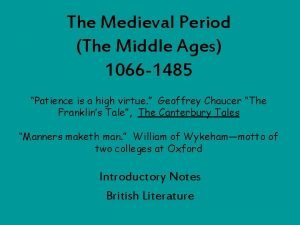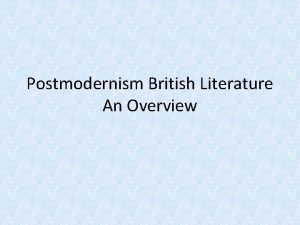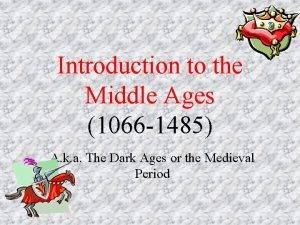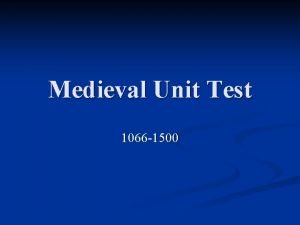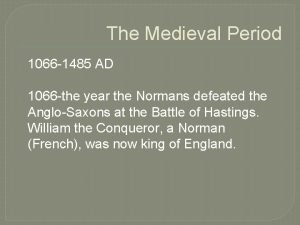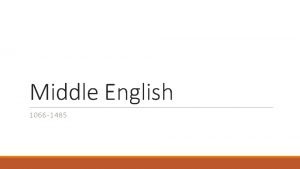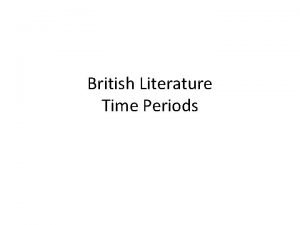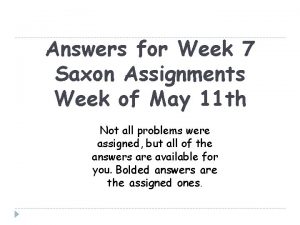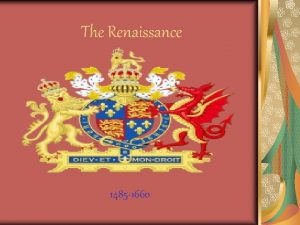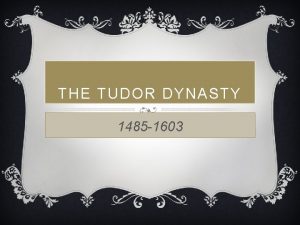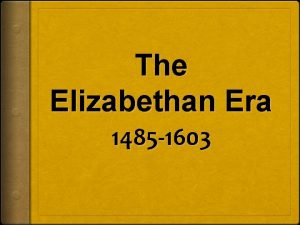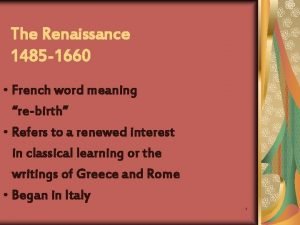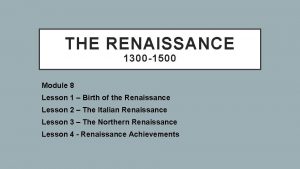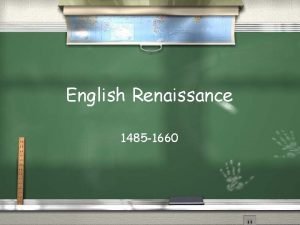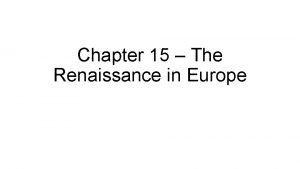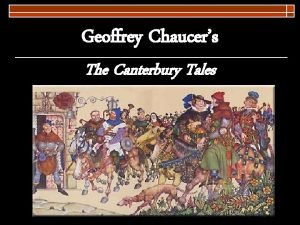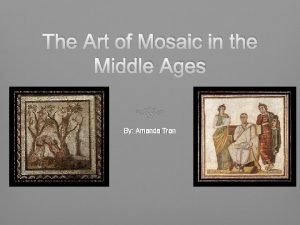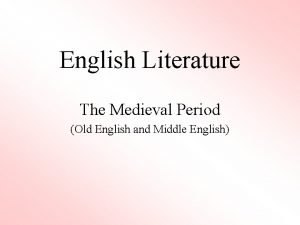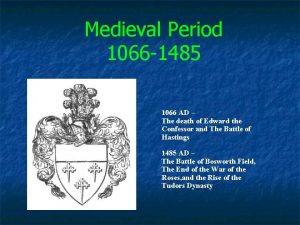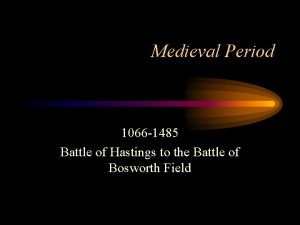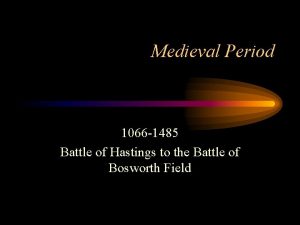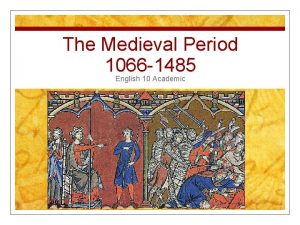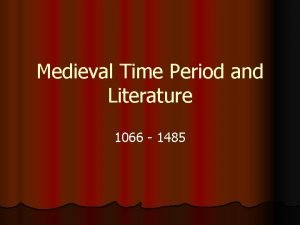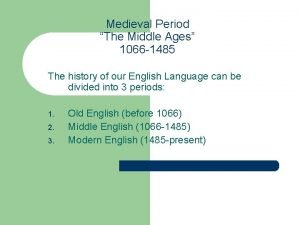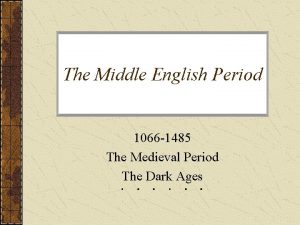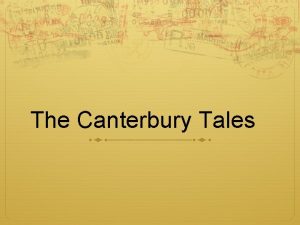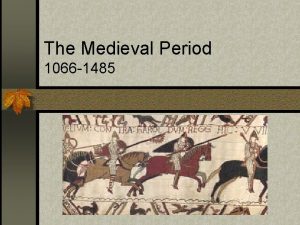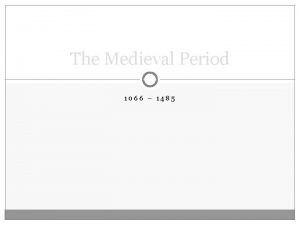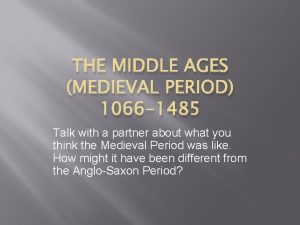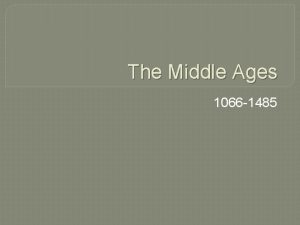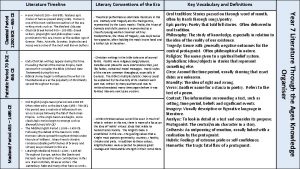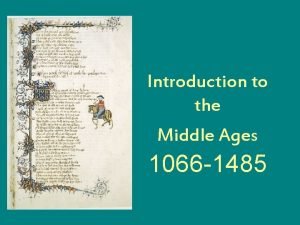The Medieval Period 1066 1485 AD 1066 The



















- Slides: 19

The Medieval Period 1066 -1485 AD

1066 § The year the Normans defeated the Anglo-Saxons at the Battle of Hastings. § William the Conqueror, a Norman (French), was now King of England.

I. Norman Rule in England A. The A-S culture and Norman/French culture blended. B. Normans ruled less than 100 years 1. Brought Feudalism: land divided among noble barons. Knights served barons. Lowest class were the serfs or peasants.

II. The Royal Houses of Plantaganet, Lancaster, & York A. 1154 -end of Norman Rule, beginning of Royalty B. Plantaganet Rules 1. 1 st one-Henry II—Increased King’s power and took it from the barons. a. wanted also to lead Roman Catholic church. He had Archbishop Thomas Becket of Canterbury murdered – 1170.

Continued. . 2. 1215 -King John signed Magna Carta. In this document, he agreed not to raise taxes without consent of barons. 3. Others—Richard the Lionhearted, John, Edward I, Richard II (last one)

C. Lancaster Rulers 1. 3 Kings: Henry IV, V, VI 2. Henry IV-went insane-gave rule to uncle, the Duke of York, while he recuperated. 3. 1455 -Henry VI got better, wanted throne back. Duke fought & won—war 30 years. “War of the Roses”

D. York Rulers 1. 1 st one-Edward IV-encouraged Wm. Caxton to make printing press. 2. Edward V-only 12 yrs old when he takes throne—Uncle Richard III takes over—kills Ed V and his brother—then takes throne— Richard III killed in battle b/c of this. 3. Henry Tudor takes over, distant relative of Lancasters.

Chivalric Live in Medieval England a. Knights: fought French, journeyed to Holy Lands, jousted in tournaments. b. Chivalry: ideal knights must live by— honorable, courteous, generous, brave, skillful in battle, respectful of women, helpful to weak.

IV. Religious Life a. Roman Catholic Church: all belonged— Barons, Knights, serfs b. Knights fought for Church—crusades for Holy Land c. Cathedrals were built during this time d. Those who went on Crusades were influenced by Moslems, natives of the Holy Land, through Arabic numerals, Algebra, and Arabic medicine.

V. City Life A. 1349—Black Death/Bubonic Plague killed 1/3 of the people of England. B. After plague—cities sprung up everywhere C. Work Guilds formed D. End of Knighthood—invention of gunpowder.

VI. Storytelling A. Romances: stories with a blend of chivalry, touches of love, magic & marvels B. Folk Ballads: stories sung by common people.

VII. Pilgrimages -long trips/journeys to holy places, popular in Medieval Christianity. -pilgrims travel long distances to toms of saints or other shrines (Rome, Holy Land) -pilgrims ask for divine assistance, give thanks, ask for miracles, do penance, show devotion. -they felt pilgrimages were essential to Christian beliefs -some still take pilgrimages today.

Canterbury, England § § About 50 miles SE of London Major destination for English pilgrims Site of Becket’s murder in 1170 People flooded to Cathedral to pay respects.

Geoffrey Chaucer § § § 1343 -1400 Son of a wealthy merchant Became a page in a royal house Soldier, diplomat, royal clerk 1359 captured during war, and his ransom paid by the king § Traveled extensively throughout his employment

Chaucer continued § Father of English Poetry—poems have never gone out of print; was even popular in his own day. § Buried in Westminster Abbey—Poet’s Corner

Frame Tale

The Canterbury Tales § The story of a group of 29 pilgrims (plus the narrator) from varied walks of life who are traveling from London to the shrine of Saint Thomas a Becket at Canterbury (about 50+ miles). § The tales are stories they tell to pass the time as they travel. § Pilgrims are gathered at The Tabard, an inn, at the beginning of the poem.

§ Each pilgrim was to tell 2 tales on the way to Canterbury, and 2 on the return journey. § Prologue to The Canterbury Tales describes each pilgrim.

Pre-reading Vocabulary § § § § § Absolution Accrue Adversity Apothecary Astrology Privy Relic Wend Intoning penitents § § § § § Chivalry Ecclesiast Eminent Felicity Parley Pestilences Sanguine Ulcer solicitous
 Middle ages 1066 to 1485
Middle ages 1066 to 1485 Postmodernism in british literature
Postmodernism in british literature The middle ages 1066 to 1485 unit test closed book
The middle ages 1066 to 1485 unit test closed book The middle ages 1066 to 1485 unit test
The middle ages 1066 to 1485 unit test The middle ages 1066-1485 unit test
The middle ages 1066-1485 unit test The middle ages 1066 to 1485 unit introduction
The middle ages 1066 to 1485 unit introduction Old english anglo saxon period
Old english anglo saxon period The anglo-saxon period 449 to 1066 answers
The anglo-saxon period 449 to 1066 answers The renaissance 1485 to 1660 answers
The renaissance 1485 to 1660 answers 1603-1485
1603-1485 1603-1485
1603-1485 1660 in word
1660 in word The northern renaissance lesson 3
The northern renaissance lesson 3 The english renaissance 1485 to 1660
The english renaissance 1485 to 1660 The italian states lesson 1
The italian states lesson 1 Medieval period
Medieval period The canterbury tales medieval period
The canterbury tales medieval period Medieval mosaic art
Medieval mosaic art Characteristics of medieval period in english literature
Characteristics of medieval period in english literature Prehistory timeline
Prehistory timeline
